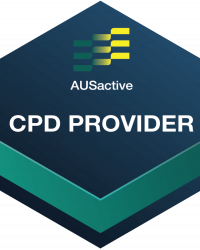Mat Repertoire
Abdominal Work:
Single Leg Stretch
Alternate Names
One Leg Stretch
Derived From
Classical Mat Work: The One Leg Stretch
Primary Element
Stability
Why for Primary?
To develop control in the deep abdominal muscles transversus abdominis to create pelvis and torso stability. Adding the lever of the extended leg challenges pelvis stability.
Secondary Element
Strength
Why for Secondary?
To develop strength in the torso flexors rectus abdominis and the hip flexors.
Tertiary Element
N/A
Why Tertiary?
N/A
Repetitions
4-5 each side
Plane of Motion
Sagittal
Targeted Muscles
For torso flexion the targeted muscles are rectus abdominis or the ‘six-pack’ muscles at the front of the torso to overcome gravity and curl the torso forwards and upwards. When the torso is lowering back down the torso extensor muscles Erector Spinae are likely activated, but the abdominals are still working eccentrically against gravity to lower with control.To create pelvis stability the targeted muscles are the deep abdominal muscles transversus abdominis.
To extend the leg and lift it up and forwards of the torso the hip flexor muscles are used inlcuding:
- Psoas
- Iliacus
- Rectus femoris
Warnings
This exercise may be unsuitable for clients where torso flexion or engagement of the abdominals is contraindicated.
The exercise may be difficult for clients who present with tight hip flexors, or lumbar pain due to the legs being lifted at a 90 degree angle. Try and round the lumbar spine and relax into the Mat and bring the knees in towards the chest. Alternatively place the feet down onto the Mat and lift and extend one leg at a time from that position.
Execution
Lie supine on the Mat and chest lift up to take one leg up in towards the chest (beyond tabletop or the 90 degree angle) the other leg extended and floating off the Mat. Inhale to switch leg positions, exhale to draw the knee in towards the chest. Outside hand onto the shin, inside hand on the inside of the ankle or shin.
Observations
Do a body scan of the client taking note of the following points
- Head and Neck
- Is the back of the neck long and crease free? A slight retraction of the neck with the chin tucked can help avoid straining the neck
- Pelvis
- Are the hip bones even horizontally or is the client leaning to one side?
- Is the client able to keep a slight posterior pelvic tilt throughout, and avoid arching into their lumbar spine?
- Legs
- Are the legs switching evenly?
- Is the client about to draw the leg in close towards the chest? Note tight hip flexors will prevent the leg coming in too close
Learning Style Technique Cues
Auditory – word associations that connect mind and body
- Maintain the chest lift throughout the exercise
- Say the client’s name when you’re about to interact with them
Visual
- Maintain your gaze or eye line on the knees, avoiding dropping or lifting the chin
- Imagine the thigh bone extending the leg, not the foot
- You may demonstrate a part of the movement as a visual representation for the client to see
Kinaesthetic
- Feel the pelvis anchor to the mat before extending the working leg, to avoid hitching the hip
- Reach and open through the front of the hip as the leg extends
Modifications and Variations
Regress the exercise by
- Keeping one foot on the Mat and drawing the other leg up towards the chest, switching legs and placing the foot down to the Mat instead of extending it long above the Mat
- Supporting the upper body with a foam wedge or cushion, keeping the head down and working through the arm and leg movements
- Reducing the repetitions and/or pace
- Working on Warm Up: Hundred Preparation
- Working on Abdominal Work: Left Lift and Abdominal Work: Roll Back
Progress the exercise by
- Increasing the pace and repetitions
- Adding a resistance band around the feet to press the feet into throughout (some adjustment of hand position to hold the ends of the band is necessary). This helps to engage and work the hip flexor muscles
- Working towards Abdominal Work: Criss Cross
Client experiencing neck strain or pain?
- Lengthen the back of the neck so the chin is gently tucked and place the hands behind the head to support the weight of the head with the arms. Look to the knees, inhale, then exhale to lift the head (maintaining the angle of the neck as if blowing air to the knees) and lift the sternum forward. Inhale to return to the starting position.
- If the client finds it difficult to regulate or manage the angle of the neck try placing a ‘chin ball’ or tennis ball under their chin to assist in the head and neck positioning. You may have heard the cue “Imagine a peach or plum under the chin”, this idea is where that more traditional cue originates.
Client experiencing tight hip flexors?
- Try letting the legs separate and externally rotate, and hook one ankle over the other to create some support for the weight of the legs
- Stretch the hip flexors prior to the exercise with Warm Down: Kneeling Lunge
Series and Transitions
This exercise is part of the Abdominal work series which includes a range of other exercises in the fundamental and progressive repertoire. The Abdominal Work series can also be found in the Reformer, Wunda Chair and Cadillac repertoire.
Inspired Academy follows the below order to focus on stability before adding mobility and strength.
Fundamental repertoire
- Leg Lift
- Roll Back
- Single Leg Stretch
- Criss Cross
- The Hundred

